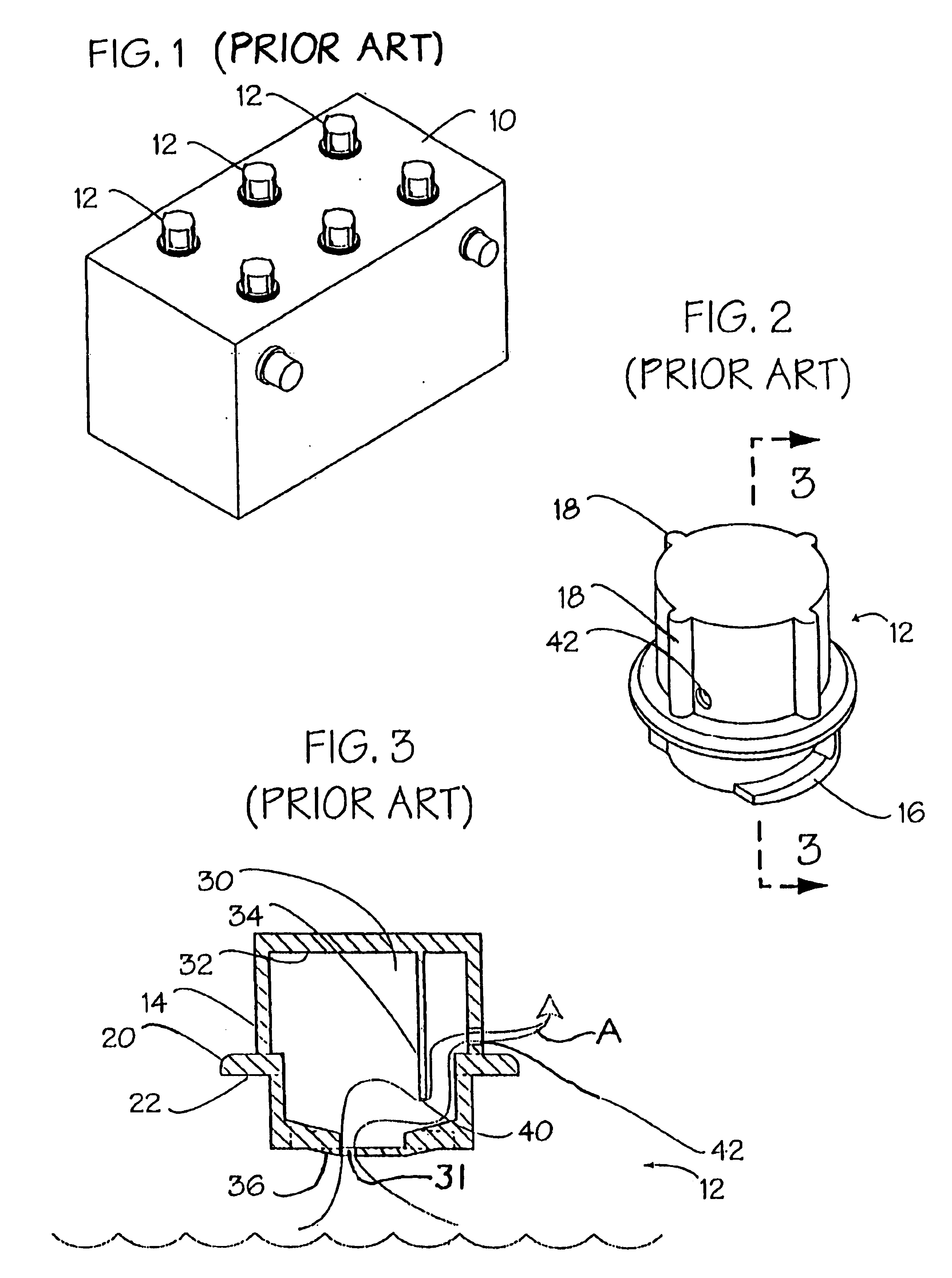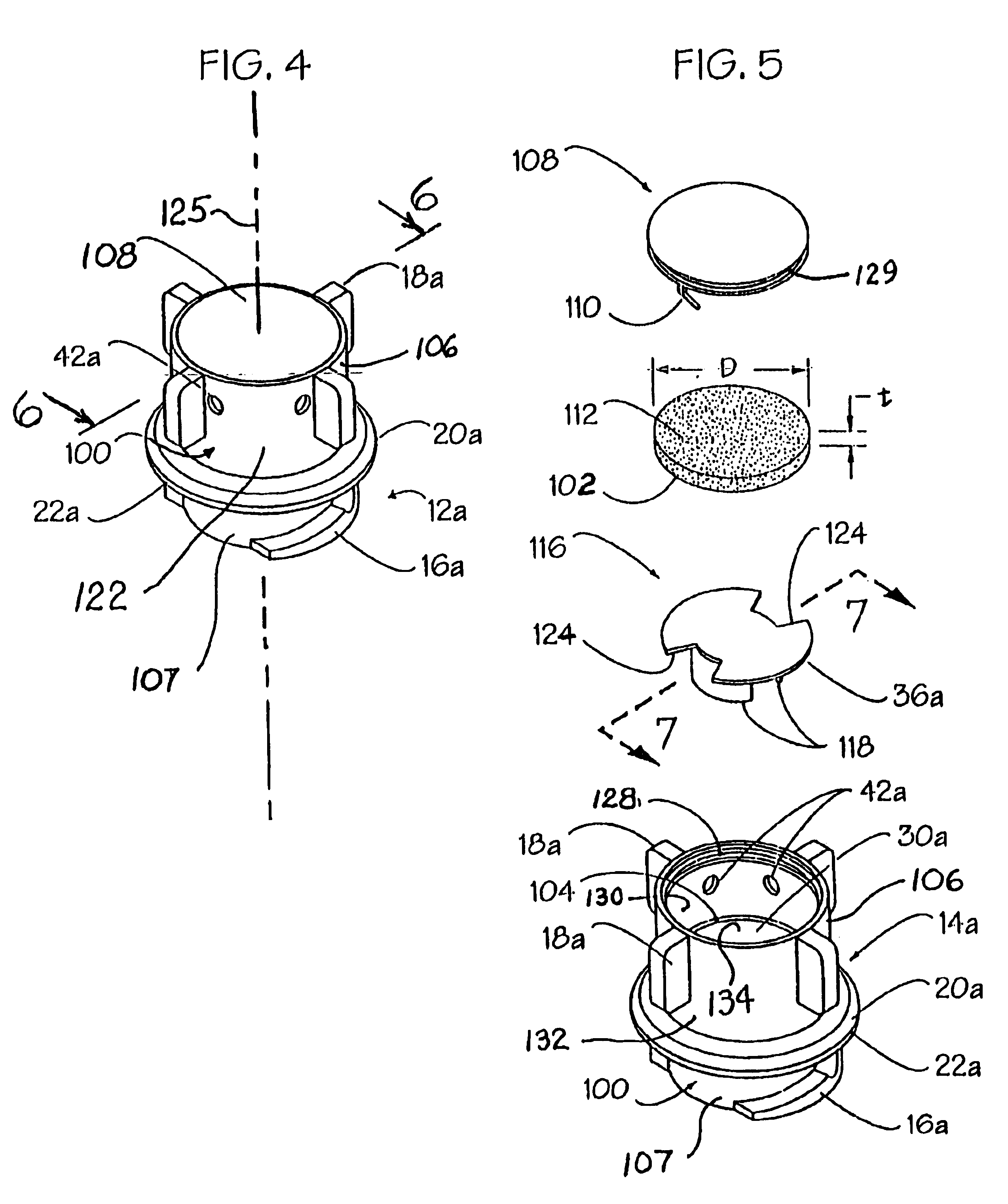Lead-acid safety battery cap
a safety battery and lead-acid technology, applied in the field of batteries, can solve the problems of rapid corrosion of metals, eat holes in clothing and other fabric materials, and injuring people,
- Summary
- Abstract
- Description
- Claims
- Application Information
AI Technical Summary
Benefits of technology
Problems solved by technology
Method used
Image
Examples
Embodiment Construction
FIG. 1 illustrates a conventional, heavy duty, deep cycle lead-acid electrical storage battery 10 of the type utilized in vehicles powered solely by battery power. For example, a deep cycle battery 10 may be utilized to power a golf cart, a warehouse forklift, a wheelchair or some other mobile vehicle operated solely by battery power.
The battery 10 illustrated has six cells, each of which has a fill opening that is closed by a conventional battery cap 12. A single one of the battery caps 12 is illustrated in detail in FIGS. 2 and 3. The battery cap 12 is formed of stiff plastic that defines an upper portion of 14 and a lower portion 16. Four wings or vanes 18 spaced 90 degrees apart project radially from the otherwise cylindrical body of the upper portion 14. The wings or vanes 18 enable a user to grasp the cap 12 and twist it counterclockwise to remove it from the fill opening of a battery or clockwise to reattach it into a fill opening in the battery 10. The lower portion 16 of th...
PUM
| Property | Measurement | Unit |
|---|---|---|
| distance | aaaaa | aaaaa |
| diameter | aaaaa | aaaaa |
| diameter | aaaaa | aaaaa |
Abstract
Description
Claims
Application Information
 Login to View More
Login to View More - R&D
- Intellectual Property
- Life Sciences
- Materials
- Tech Scout
- Unparalleled Data Quality
- Higher Quality Content
- 60% Fewer Hallucinations
Browse by: Latest US Patents, China's latest patents, Technical Efficacy Thesaurus, Application Domain, Technology Topic, Popular Technical Reports.
© 2025 PatSnap. All rights reserved.Legal|Privacy policy|Modern Slavery Act Transparency Statement|Sitemap|About US| Contact US: help@patsnap.com



